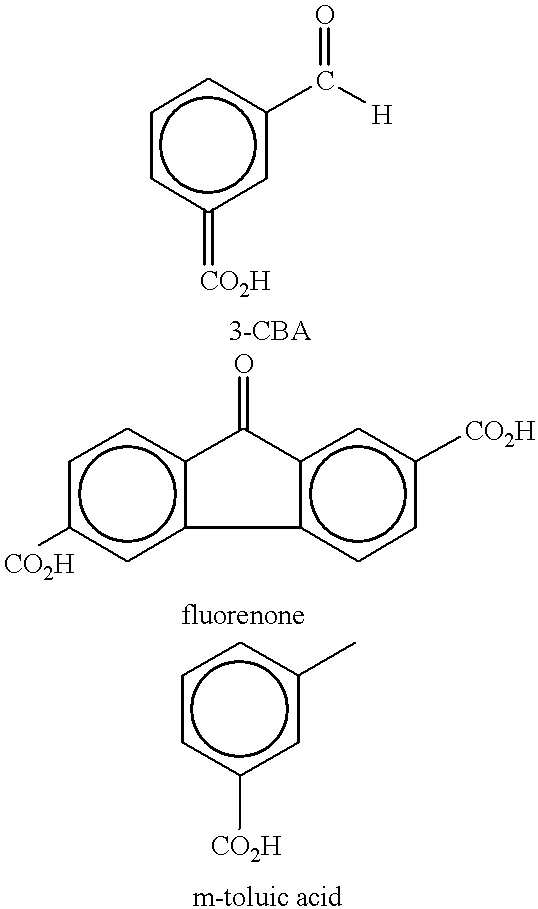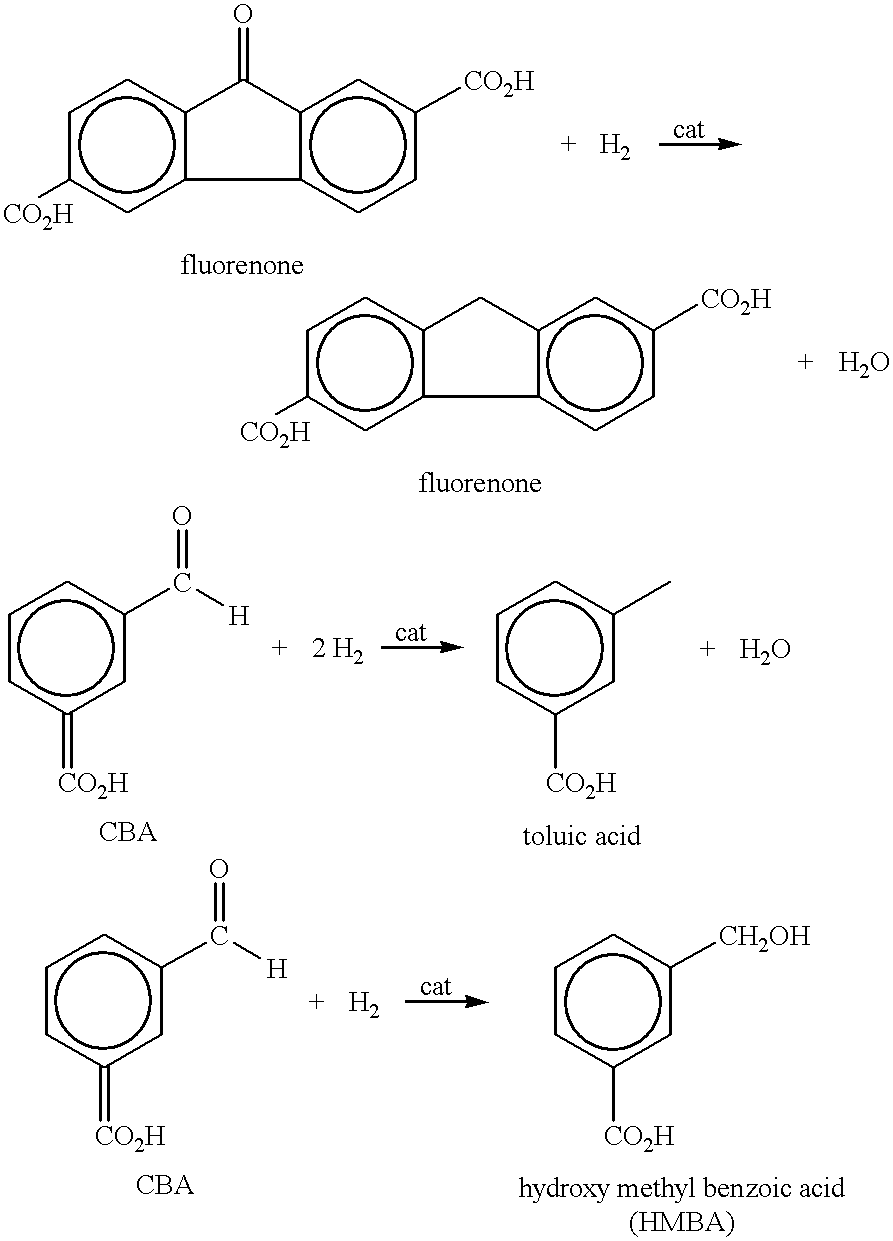Method of purifying aromatic dicarboxylic acids
a technology purification method, which is applied in the preparation of carboxylic compounds, organic chemistry, chemistry apparatus and processes, etc., can solve the problems of undesirable unfavorable cba and toluic acid, and unfavorable hydrogenation of aromatic dicarboxylic acid to produce undesired by-products, etc., and achieve the desired bromate dicarboxy
- Summary
- Abstract
- Description
- Claims
- Application Information
AI Technical Summary
Benefits of technology
Problems solved by technology
Method used
Image
Examples
Embodiment Construction
relates to the purification of TPA. For example 7, crude TPA was dissolved at a temperature of 260.degree. C. with other conditions being the same.
As can be seen by comparing the rate constants for the appearance of CHDA in Table 1, the addition of small amounts of carbon monoxide in examples 2, 3 and 5-7 significantly decreases the amount of undesired CHDA produced when compared to examples 1 and 4 in which no CO is used. As more CO is used, the production rate of CHDA decreases. Compare examples 2 and 3 and examples 5 and 6.
In example 3, when 500 ppm of CO is introduced with a H.sub.2 partial pressure of 100 psi, the rate constant for producing CHDA was 0.0. However, for example 3, the rate constant for the disappearance of CBA decreased to 0.044. Thus, perhaps too much CO was used in example 3. On the other hand, in example 6, 500 ppm of CO was also used. However, comparing examples 4-6, it can be seen that the rate of disappearance of the CBA impurity was highest in example 6 (1...
PUM
| Property | Measurement | Unit |
|---|---|---|
| temperatures | aaaaa | aaaaa |
| temperatures | aaaaa | aaaaa |
| weight percent | aaaaa | aaaaa |
Abstract
Description
Claims
Application Information
 Login to View More
Login to View More - R&D
- Intellectual Property
- Life Sciences
- Materials
- Tech Scout
- Unparalleled Data Quality
- Higher Quality Content
- 60% Fewer Hallucinations
Browse by: Latest US Patents, China's latest patents, Technical Efficacy Thesaurus, Application Domain, Technology Topic, Popular Technical Reports.
© 2025 PatSnap. All rights reserved.Legal|Privacy policy|Modern Slavery Act Transparency Statement|Sitemap|About US| Contact US: help@patsnap.com



